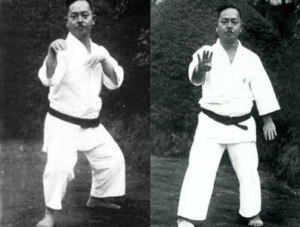
Kata, the intricate patterns of movements practiced in martial arts like karate, are an essential aspect of training. They serve multiple purposes, including honing technique, improving focus, and embodying the principles of the art. In karate, kata progression often follows distinct stages, each catering to practitioners at different skill levels. Let’s take a look at the various stages of kata in karate:
Core Basic Kata
Core basic kata form the foundation of karate practice. These kata are meticulously designed to instill fundamental techniques, stances, and principles for beginners. Practicing core basic kata is akin to laying the groundwork for future progression in the art. Through repetition and attention to detail, beginners develop a solid understanding of essential movements and concepts. Core basic kata typically includes straightforward sequences that emphasize basic strikes, blocks, and footwork. Examples of core basic kata may include the Pinan series (also known as Heian in Shotokan / Shotokai), the Taikyoku katas, Gekisai kata from Goju-Ryu and the Shorin-Ryu Fukyugata ichi and ni.
Core Advanced Kata

As practitioners advance in their karate journey, they transition to core advanced kata. These kata build upon the foundation established in core basic kata, introducing more complex techniques, combinations, and principles. Core advanced kata requires a deeper level of understanding and mastery of karate fundamentals. They often involve intricate movements, dynamic transitions, and advanced applications of techniques. Practicing core advanced kata challenges experienced martial artists to refine their skills, enhance their timing, and deepen their understanding of karate’s nuances. Examples of core advanced kata may include Passai-Dai, Kusanku-Dai, Niseishi or Jion.
Supplemental Advanced Kata
Supplemental advanced kata complements the core advanced kata, offering additional challenges and insights into karate practice. These kata may come from different stylistic lineages or have been developed to emphasize specific aspects of the art. Supplemental advanced kata provides practitioners with opportunities to explore variations, delve into specialized techniques, and broaden their repertoire beyond the standard curriculum. They offer a platform for experimentation and creativity, allowing advanced practitioners to further refine their personal expression of karate. Examples of supplemental advanced kata may include Gojushiho-Dai, Gojushiho-Sho, Suparinpei or Unsu in various Karate styles.
Conclusion
Understanding the different stages of kata in karate is crucial for practitioners at all levels. From core basic kata to supplemental advanced kata, each stage offers unique challenges and opportunities for growth. By diligently practicing kata at every stage of their journey, martial artists can deepen their understanding of the art, refine their techniques, and embody the timeless principles of karate. Whether a beginner mastering the basics or an experienced practitioner seeking to expand their repertoire, kata remains a cornerstone of karate practice, guiding students along the path of continuous improvement and self-discovery.
Thanks for reading.
Gert
Share this article
